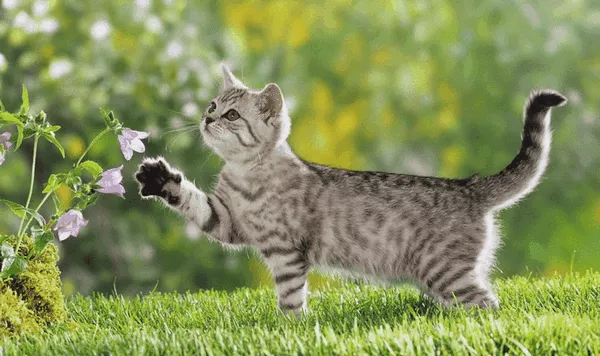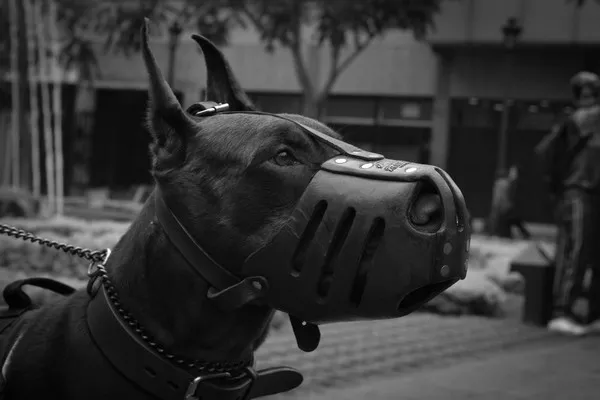Breed Overview
The Balinese cat is a breed known for its grace, elegance, and intelligence. Originating from the United States in the 1940s, the Balinese is essentially a long-haired variety of the Siamese cat. This breed shares many physical characteristics with the Siamese, including a slender body, striking blue almond-shaped eyes, and large ears. However, what sets the Balinese apart is its luxurious, silky coat, which comes in various color points, such as seal, chocolate, blue, and lilac.
Grooming Needs
One of the defining features of Balinese cats is their long, flowing coats. While their fur is not as dense as some other long-haired breeds, regular grooming is still essential to prevent matting and keep their coat in optimal condition. Balinese cats should be brushed at least two to three times a week to remove loose hair and prevent tangles. During shedding seasons, which typically occur in the spring and fall, more frequent brushing may be necessary to manage excessive shedding.
In addition to brushing, Balinese cats require regular nail trimming, ear cleaning, and dental care to maintain overall hygiene and health. Starting grooming routines early in kittenhood can help acclimate Balinese cats to the process and make it a more enjoyable experience for both the cat and the owner.
Healthcare Requirements
Overall, Balinese cats are a healthy breed with a lifespan of around 12 to 16 years. However, like all cats, they are susceptible to certain health issues that owners should be aware of. Common health concerns in Balinese cats include dental problems, such as gingivitis and periodontal disease, due to their genetic predisposition to dental issues. Regular dental check-ups and professional cleanings are recommended to prevent these conditions.
Balinese cats may also be prone to respiratory issues, such as asthma and upper respiratory infections, which are common in breeds with brachycephalic facial structures. Additionally, they may develop heart conditions, such as hypertrophic cardiomyopathy (HCM), a genetic disorder that causes thickening of the heart muscles. Regular veterinary check-ups, a balanced diet, and maintaining a healthy weight can help mitigate these health risks.
Diet and Nutrition
Proper nutrition is essential for maintaining the health and well-being of Balinese cats. Like their Siamese relatives, Balinese cats are known for their active and playful nature, which requires a diet rich in protein and balanced nutrients to support their energy levels. High-quality commercial cat food formulated specifically for active breeds is recommended for Balinese cats.
Owners should also be mindful of portion control and avoid overfeeding, as Balinese cats can be prone to obesity if allowed to overeat. Additionally, providing access to fresh water at all times is crucial to prevent dehydration, especially in warmer climates or during periods of increased activity.
Exercise and Play
Balinese cats are highly active and intelligent animals that require regular exercise and mental stimulation to thrive. Interactive toys, puzzle feeders, and climbing structures can help keep Balinese cats engaged and entertained while providing opportunities for physical activity. Daily play sessions with their owners are also important for bonding and providing enrichment for these social and playful cats.
Social Needs
Balinese cats are known for their affectionate and sociable nature. They form strong bonds with their owners and enjoy being involved in household activities. While they can adapt to being alone for short periods, Balinese cats thrive in environments where they receive plenty of attention and interaction. Consider adopting a companion cat or providing stimulating toys and activities to prevent loneliness and boredom when you’re away.
Costs
Owning a Balinese cat involves various costs, including grooming, food, healthcare, and supplies. The initial cost of purchasing a Balinese kitten from a reputable breeder can range from $800 to $2,000 or more, depending on factors such as pedigree, color, and breeding lines. Additionally, ongoing expenses such as food, litter, toys, and grooming supplies can add up over time.
Healthcare costs, including veterinary check-ups, vaccinations, and preventive care, should also be factored into the budget. Owners may also want to consider investing in pet insurance to help offset unexpected medical expenses. Overall, owning a Balinese cat requires a financial commitment to provide proper care and support their health and well-being.
Time Commitment
Caring for a Balinese cat requires a significant time commitment to meet their social, grooming, and exercise needs. Daily grooming sessions, playtime, and interaction with their owners are essential for keeping Balinese cats happy and healthy. Additionally, regular veterinary check-ups, dental care, and preventive treatments such as flea and tick prevention require time and attention.
Balinese cats thrive in environments where they receive love, attention, and mental stimulation. Owners should be prepared to devote time each day to bond with their cat and provide opportunities for play and enrichment.
Living Environment
The ideal living environment for a Balinese cat is one that provides plenty of space for exercise and exploration, as well as opportunities for social interaction. Balinese cats enjoy having access to high perches, climbing structures, and interactive toys to satisfy their natural curiosity and playful instincts.
Indoor living is recommended to protect Balinese cats from outdoor hazards such as traffic, predators, and infectious diseases. However, providing access to a secure outdoor enclosure or supervised outdoor time can allow Balinese cats to safely enjoy the sights, sounds, and smells of the outdoors.
Managing Shedding
Despite their long coats, Balinese cats are relatively low shedders compared to other long-haired breeds. However, regular grooming is still necessary to remove loose hair and prevent matting. Using a slicker brush or comb designed for long-haired cats can help reduce shedding and keep the coat free of tangles. Additionally, providing a balanced diet rich in omega-3 fatty acids can promote healthy skin and coat condition.
To minimize the spread of cat hair in the home, regular vacuuming, sweeping, and lint rolling of furniture and fabrics are recommended. Washing bedding and other fabric surfaces regularly can also help reduce the buildup of cat hair and dander.
FAQs
Are Balinese cats hypoallergenic?
While no cat breed is completely hypoallergenic, some people with cat allergies may find that they tolerate Balinese cats better than other breeds. Balinese cats produce less of the Fel d 1 protein, which is a common allergen found in cat saliva and dander, making them a potentially better option for allergy sufferers.
Do Balinese cats require a lot of attention?
Yes, Balinese cats are social animals that thrive on attention and interaction with their owners. They enjoy being involved in household activities and forming strong bonds with their human companions. Providing daily play sessions, grooming, and quality time together is important for meeting their social needs.
Are Balinese cats vocal like Siamese cats?
Yes, Balinese cats are known for their vocal and expressive nature, similar to their Siamese relatives. They may engage in conversation with their owners through a variety of vocalizations, including meows, chirps, and trills, to communicate their needs and desires.
In conclusion, while Balinese cats may require a moderate level of maintenance due to their long coats and social nature, their affectionate personalities and elegant appearance make them a rewarding companion for dedicated cat owners. With proper care, attention, and love, Balinese cats can bring joy and companionship to their owners for many years to come.
Related Topics:
























